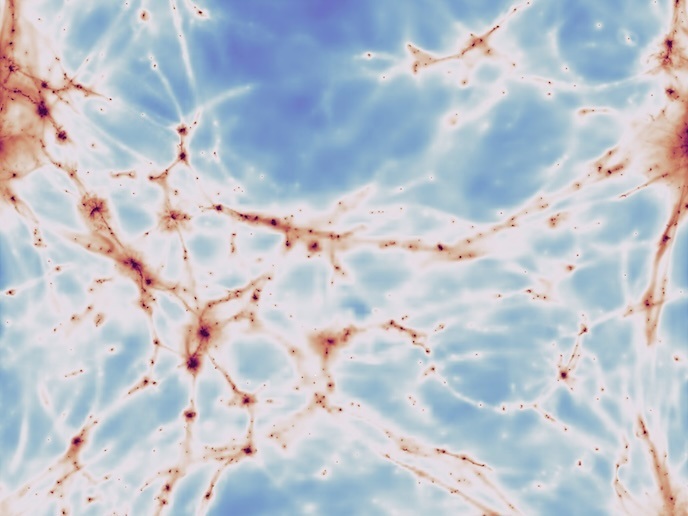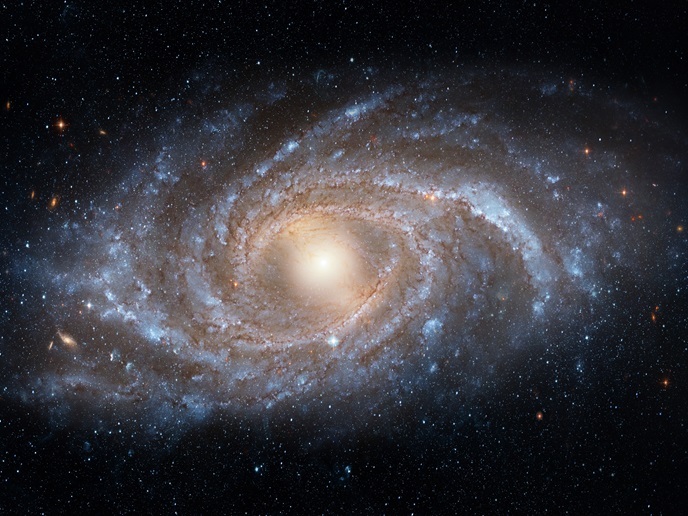Massive stars could be born in clusters, lower-mass stars could leave ‘home’
In Space, dense regions in which gas and dust are contracting result in the formation of new stars. In visible light, this dust is dark, blocking the streams of the glittering stars behind, just as fog blocks our view on a misty day. When astronomer William Herschel observed such a cloud in the constellation of Scorpius in 1774, he is said to have exclaimed: “Truly there is a hole in the sky here!” Today, it is known that these dark patches are not empty regions, but rather cool, dark clouds which harbour most of the material necessary to form one or more stars.
Do stars form necessarily in clusters?
Some lucky young stars belong to beautiful clusters comprising dozens to hundreds of stars, whereas others roam the galaxy alone or with just a partner or two. The question that arises is whether stars are born all together in clusters or are grouped later in their lifetime. Which conditions favour low-mass star and massive star formation in clusters? “Most massive stars are known to be deeply embedded in their dusty birth environments, which often makes them impervious to optical observations. To this end, we decided to look at young stars of intermediate mass, collectively known as Herbig Ae/Be stars(opens in new window). What’s more, during their early stages, young stars do not affect the cluster environment in which they were born,” notes Rene Oudmaijer, coordinator of the STARRY(opens in new window) project, which was funded under the Marie Skłodowska-Curie Actions programme.
Pinning down the star birthplace using artificial intelligence
STARRY developed a bespoke artificial intelligence system that identified more than 2 000 stars with around an 80 % chance of being a Herbig Ae/Be star. The findings have been reported in the ‘Catalogue of new Herbig AE/BE and classical Be stars: A machine learning approach to Gaia DR2’(opens in new window) published in the Astronomy and Astrophysics journal. The system analysed data from the Gaia Space telescope(opens in new window). Introduced in 2013, the data compiled by the Gaia telescope allowed researchers to determine the distances (using the so-called parallax) for approximately 1 billion stars. “This is an important, but often elusive piece of information for the study of celestial objects. To put it into perspective, Gaia’s predecessor Hipparcos(opens in new window) that flew 30 years ago provided such information for about 100 000 objects,” adds Oudmaijer. The next step was to look for clusters around these stars using data regarding their positions, motions and distances to other objects (stars in a cluster are located close to each other and have similar motions and distances). “Preliminary results allowed us to conclude that the massive objects are more likely to be located in the centre of their cluster than the lower-mass stars. The latter are either found alone or orbiting on the periphery of massive stars, like being the side result of the formation of their larger counterparts,” explains Oudmaijer. “The research conducted by STARRY is an excellent example of how the analysis of the Big Data collected by modern scientific instruments, such as the Gaia telescope, will shape the future of astrophysics. Artificial intelligence systems can identify patterns in vast quantities of data – and it is likely that in those patterns, scientists will find clues that will lead to new discoveries and fresh understanding,” concludes Oudmaijer.







